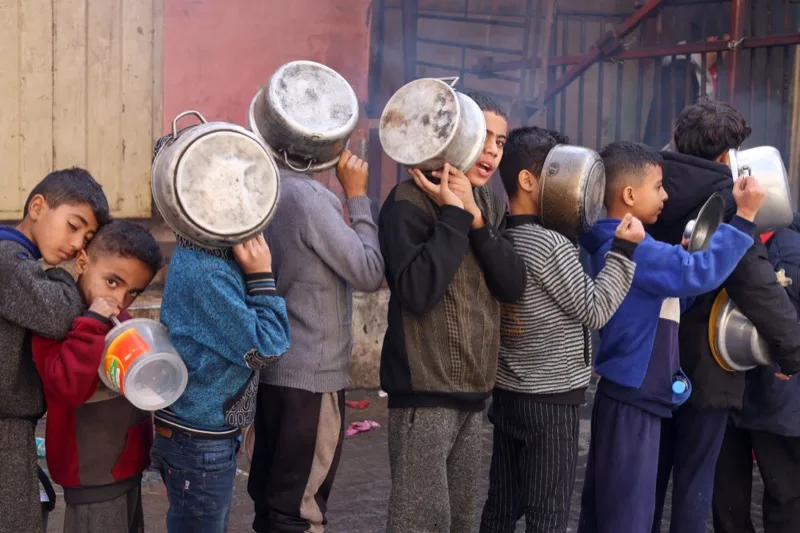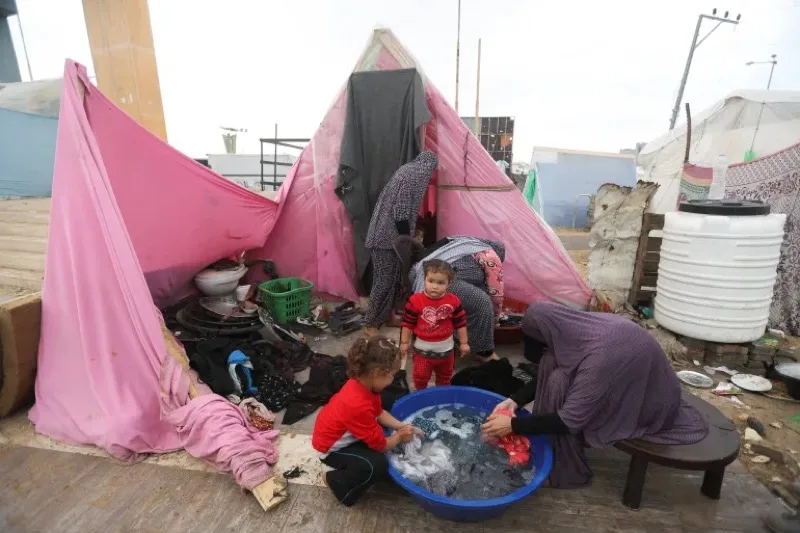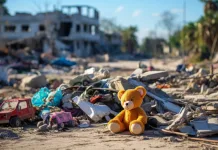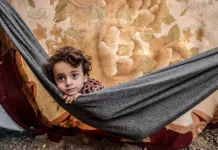
As the dire humanitarian crisis worsens, UN deplores Israels continued aid barriers pushing Palestinians into desperation. 40% of Gaza’s population is facing an imminent risk of famine.
With not getting enough aid into provide some relief to the Palestinian people, aid agencies continue to highlight how difficult Israel has made for humanitarian relief efforts to proceed to help the desperate people with basic needs such as food, water, shelter, clothing and medicine in Gaza.
“Very, very little amount of aid has been allowed in,” said Juliette Touma of the U.N. relief agency.
“The needs on the ground are huge. People lost everything, and they need everything. And now, with the rainy season, it’s everything from warm clothes to blankets. But most urgently is food and water and I think above all is protection and safety.
“There’s a cumbersome inspection process. There was a total hermetic siege for two weeks where nothing came in, and those supplies have never been replenished.
“We have been getting in very little in comparison to the 500 trucks of commercial aid and humanitarian supplies. In none of the days since the war began have we come to that amount of trucks. None. What came in is only 10% of what needs to come.”
The United Nations has also warned that it is becoming increasingly difficult to get desperately needed aid into Gaza. The UN’s humanitarian aid chief, Martin Griffiths, called out the “impossible situation” facing people in Gaza and those trying to help them, as the humanitarian situation on the ground worsens and dozens more civilians are reported killed in Israeli attacks.
“You think getting aid into Gaza is easy? Think again,” Martin Griffiths said in a post on the social media platform X, expressing frustration at how life-saving assistance is being hampered from entering the war-torn Strip.
Griffiths listed 14 obstructions to getting humanitarian relief into the enclave, including: constant bombardments and aid convoys coming under fire; three layers of inspections before an aid truck can enter the Palestinian territory; a constant list of rejected items; and aid workers themselves being killed and displaced by the war.
“This is an impossible situation … The fighting must stop,” he said.
Illustrating his point, Israeli soldiers fired on an aid convoy as it returned from northern Gaza along a route designated by the Israeli army, according to Thomas White, the director of the UH agency for Palestinian refugees, UNRWA, in Gaza.
“Our international convoy leader and his team were not injured but one vehicle sustained damage – aid workers should never be a target,” White said in a post on X.
The persistent difficulty in getting humanitarian relief into Gaza comes despite the United Nations Security Council passing a resolution last week to boost aid.
Israel’s war has killed more than 22,000 Palestinians, including just under 7,000 children, and displaced 85 percent of the population since October 7.

Amid the bombardments, a military blockade on the enclave and the restrictions on aid shipments are imperilling the health of hundreds of thousands of people.
Reporter Hani Mahmoud (Al Jazeera), reporting from Rafah in southern Gaza, describes displaced and famished people from the central and northern parts of the Strip forced to queue for hours for food assistance.
Mahmoud said: “Most of the population of Gaza has been displaced multiple times in the past three months, fleeing with whatever they can carry. UN facilities are packed full, several times beyond their maximum capacity.”
Aid groups say the situation is desperate, and UN agencies have warned that 40 percent of Gaza’s population is facing an imminent risk of famine.
“Doctors Without Borders [Medecins Sans Frontieres, or MSF] warns that an epidemic is inevitable, and with most hospitals and clinics out of service, when people do fall ill they will have nowhere to go,” Mahmoud said.
The UN says 150,000 people are being forced to leave central Gaza after the Israeli army issued evacuation orders, telling people to once again move further south.















